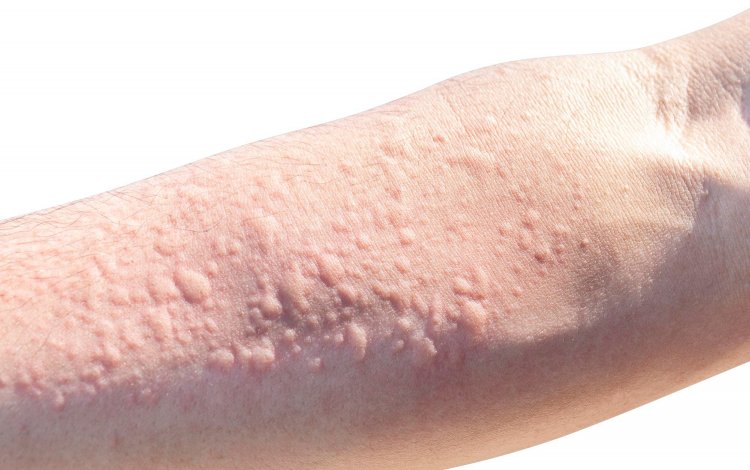Erysipelas (St. Anthony's Fire): Causes, Symptoms, and Treatment
Erysipelas, colloquially known as St. Anthony's Fire, is a bacterial infection of the skin and superficial lymphatics, characterized by a distinct raised border and an intense erythematous rash. This article provides an in-depth exploration of the causes, symptoms, diagnosis, treatment, complications, and prevention strategies associated with erysipelas.

Causes of Erysipelas
Erysipelas is primarily caused by infection with group A Streptococcus bacteria, particularly Streptococcus pyogenes. These bacteria commonly reside in the throat or on the skin and can enter the body through breaks in the skin such as cuts, abrasions, surgical wounds, or areas affected by dermatitis. Factors that increase susceptibility to erysipelas include:
Skin Barrier Compromise: Any breach in the skin's integrity allows bacteria to invade deeper layers.
Poor Hygiene: Inadequate skin hygiene increases the risk of bacterial colonization.
Underlying Conditions: Conditions such as diabetes mellitus, venous insufficiency, lymphedema, and immunosuppression compromise skin immunity and lymphatic drainage, predisposing individuals to infection.
Symptoms of Erysipelas
The hallmark signs and symptoms of erysipelas include:
Skin Rash: An abrupt onset of a fiery-red, well-demarcated rash with a raised edge resembling the border of a geographic map. The rash rapidly expands and may feel warm and tender.
Systemic Symptoms: Fever, chills, malaise, and fatigue are common, indicating systemic involvement.
Pain and Swelling: The affected area is often painful, tender to touch, and may exhibit swelling.
Diagnosis of Erysipelas
Diagnosing erysipelas typically involves a combination of clinical evaluation and, in some cases, laboratory tests:
Clinical Examination: The characteristic appearance of the rash and symptoms is usually sufficient for diagnosis.
Blood Cultures: To identify the causative bacteria and guide antibiotic therapy.
Skin Biopsy: Rarely necessary but may be performed if diagnosis is uncertain or to rule out other skin conditions.
Treatment of Erysipelas
Prompt initiation of treatment is crucial to prevent complications and spread of infection:
Antibiotics: Oral antibiotics such as penicillin V or amoxicillin are usually effective for uncomplicated cases. Severe cases or those with systemic symptoms may require intravenous antibiotics such as penicillin G or cephalosporins.
Pain Relief: Nonsteroidal anti-inflammatory drugs (NSAIDs) or acetaminophen can alleviate pain and reduce fever.
Elevation and Rest: Elevating the affected limb (if applicable) and encouraging rest help reduce swelling and promote healing.
Fluid Intake: Adequate hydration supports overall health and helps manage fever.
Complications of Erysipelas
Untreated or inadequately managed erysipelas can lead to serious complications:
Cellulitis: Spread of infection into deeper layers of the skin.
Abscess Formation: Collection of pus within tissues.
Sepsis: Systemic infection spreading through the bloodstream.
Necrotizing Fasciitis: Rare but life-threatening, involving rapid tissue destruction.
Prevention of Erysipelas
Preventive measures focus on reducing risk factors and promoting skin health:
Wound Care: Prompt cleaning and dressing of wounds to prevent bacterial entry.
Hygiene: Regular bathing and proper skin care to minimize bacterial colonization.
Management of Underlying Conditions: Control of diabetes, venous insufficiency, and other predisposing factors.
Vaccination: In some cases, vaccination against Streptococcus pyogenes may be considered for high-risk individuals.
In conclusion, erysipelas remains a significant infectious disease, primarily caused by Streptococcus bacteria. Early recognition, prompt treatment with appropriate antibiotics, and preventive strategies are essential for managing erysipelas effectively and reducing the risk of complications. Continued research into new treatment modalities and preventive measures will further enhance outcomes for individuals affected by this condition.
In summary, erysipelas necessitates comprehensive medical attention, emphasizing the importance of early diagnosis, proper antibiotic therapy, and diligent preventive care to mitigate its impact on individuals and communities.
Disclaimer
The information provided in this article is for educational purposes only and should not be considered medical advice. If you have any health concerns or are experiencing symptoms, it is important to consult with a healthcare professional, such as a doctor or clinic, for proper diagnosis and treatment. Always seek the advice of your doctor or other qualified health provider with any questions you may have regarding a medical condition. Do not disregard professional medical advice or delay in seeking it because of something you have read in this article.
#Erysipelas #Health #SkinCare #Infection #Antibiotics #MedicalAdvice #PreventiveCare
What's Your Reaction?





















